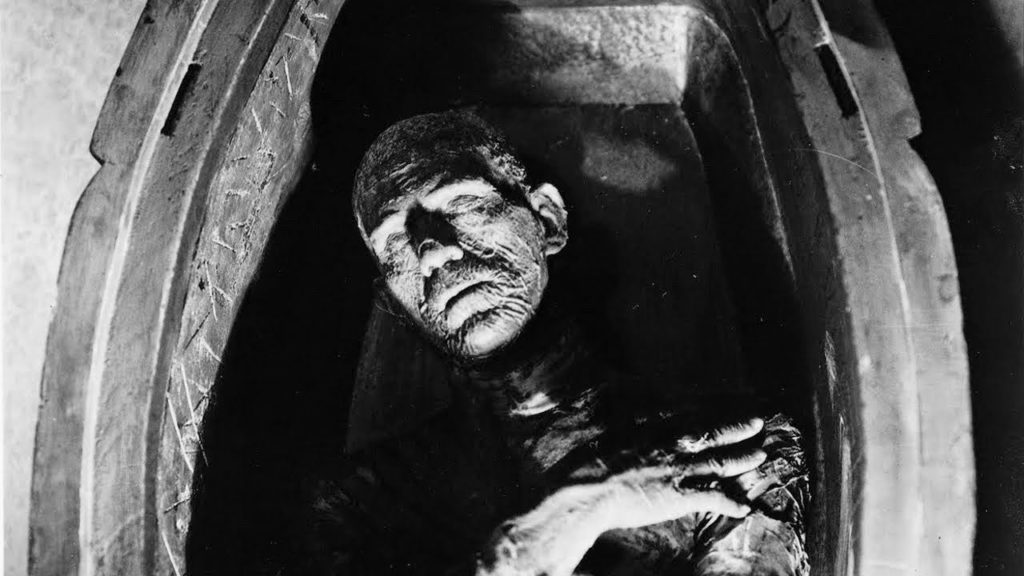
When Howard Carter uncovered Tutankhamun’s long-buried tomb in Egypt’s Valley of the Kings in November 1922, he sparked a global press frenzy and triggered a new craze — Egyptology, dubbed Tutmania. The treasures of the tomb became the Tutankhamun Exhibition, which toured the world in the 1920s and 1930s, fascinating onlookers and influencing everything from cocktail recipes to women’s fashion. When rumors began to swirl around the sudden, unexplained deaths of key individuals involved with Carter’s expedition, the concept of an ancient ‘Curse of the Mummy’s Tomb’ rapidly became part of the zeitgeist.
People were fascinated by the concept of 3000 year old remains and the complex rituals performed by the Ancient Egyptians’ to ensured immortality. If the wizened body of the boy king could survive millennia, what about his vengeful soul?
The 1932 movie, which may seem overly slow-moving to modern viewers, taps into Tutmania and also introduces the concept of the desertscape and terrible, ancient evil to audiences. The main action takes place in Cairo (or the Universal backlot’s version of that city) and revolves around a mummy who is brought to life by the accidental reading of a spell. He then hunts down the reincarnation of his lost love, only to be thwarted, and reduced to the dust from whence he came.
The storytelling is slow and atmospheric, and, as with all Karloff characters, the monster is imbued with a sense of pathos. Its influence can be seen in assorted films like The English Patient (The Mummy revolves around a similarly tragic love story) and… um… Stargate.
The reboot of the franchise in the 2000s focuses more on blockbuster action sequences. Interestingly enough, both Clive Barker and George A. Romero were attached to the project as directors at some stage. It might have been better to see this property regenerated as low-budget horror rather than a multi-million dollar special effects festival.
Universal had another go at rebooting The Mummy in 2017, starring Tom Cruise — not as the Pharaoh furious at being disturbed, but as modern-day soldier haunted by an Egyptian princess. Once again, SFX and action dominated—and audiences took a hard pass. Tutmania is long forgotten and Egyptology just doesn’t have the box office allure it had in Tutankhamun’s 20th century heyday.
- The Flick Philosopher — more musings on the influence of the dead
- Eccentric Cinema review — picks up on the similarities between this film
and Dracula - Wsu.edu— useful background & commentary